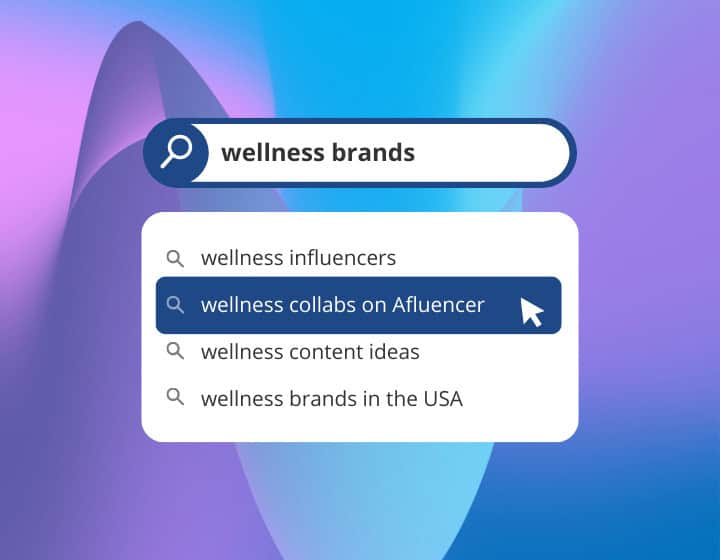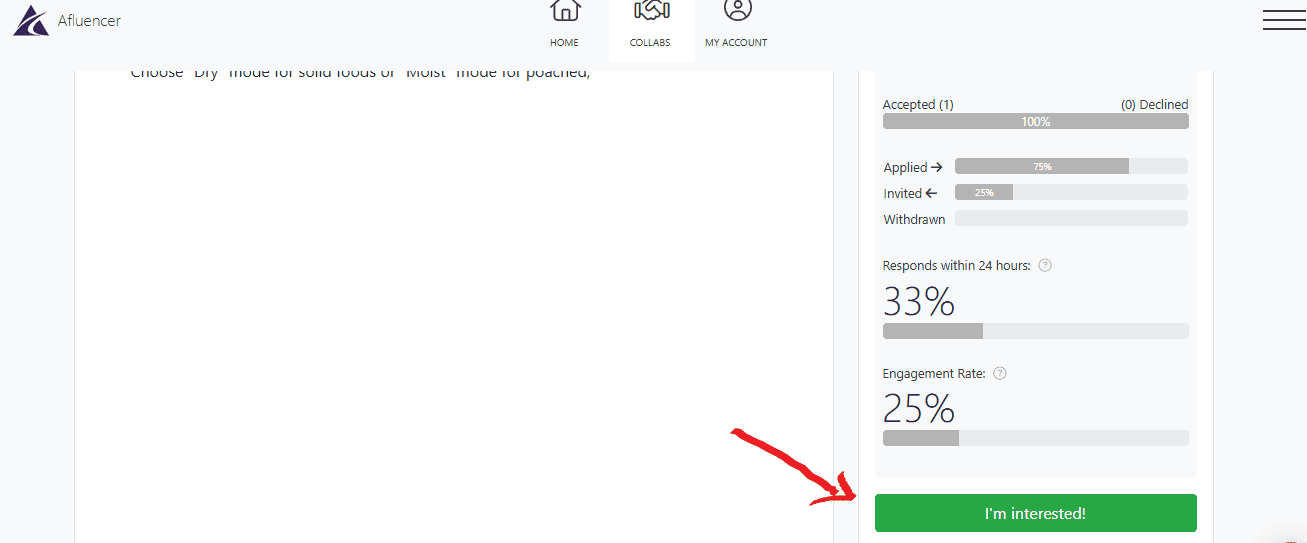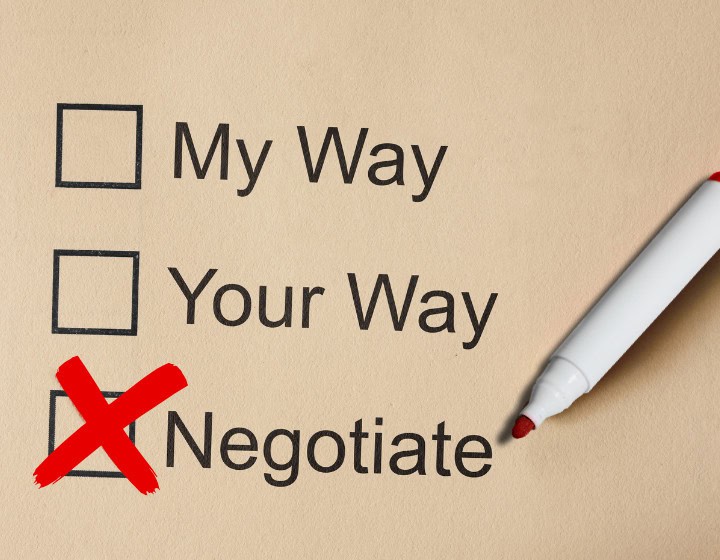You want brand deals that feel right. You also want to get paid.
This guide is packed with influencer collaboration tips to help you land the right partners, negotiate better deals, and prove your value so brands keep coming back. We’ll cover how to find brands for influencers that fit your niche, how to confidently pitch to brands you’ve never worked with, and how to master influencer negotiation so you go beyond freebies.
You’ll also learn influencer performance tracking methods to showcase influencer ROI — turning one-time posts into lasting influencer brand partnerships. By following these strategies, you can create a repeatable system for attracting and keeping the kinds of partnerships that grow your influence and income.
Whether you’re a new creator aiming for your first Collab or an experienced influencer ready to level up, these steps will help you move with more confidence, clarity, and strategy. The right approach can turn casual outreach into meaningful, paid brand relationships that last.
By the end, you’ll know exactly where to look, what to say, and how to prove you’re worth every cent. These strategies are flexible enough to fit your personal creator journey — whether you’re just starting out or scaling fast.
Let’s jump right into it — because the right influencer collaboration tips can take your brand deals from “maybe” to “let’s sign.”
How to Find Brands That Match Your Niche

Great partnerships start with the right fit.
When you find brands that align with your niche, everything clicks. Your content feels natural. Your audience trusts the recommendation. And the brand sees real results.
To find brands that truly match your niche, use search filters on influencer marketing platforms like Afluencer. This targets opportunities that align with your audience and content style. Here’s a simple step-by-step strategy:
1. Filter for Relevance – Search by:
- Niche (e.g., beauty, tech, wellness, fitness, travel)
- Platform (Instagram, TikTok, YouTube, etc.)
- Audience (age, location)
2. Check Brand Fit – Review recent campaigns and influencer posts. Would your followers engage with content like this?
3. Go Micro for ROI – Many brands prefer creators under 50K followers. Engagement is often stronger, and partnerships feel more authentic.
4. Apply with Purpose – On Afluencer, it’s brands that initiate contact. You apply to Collabs — they message you if there’s a fit. Use the I’m interested button and regularly check back.

5. Make Your Niche Clear – Your bio on platforms like Afluencer should clearly state your niche. This helps brands quickly understand what you offer and why you’re a great match.
Pro tip: Keep a running list of your dream influencer brand partnerships. Follow their channels, learn their voice, and align your content so your application feels like a natural fit.
How to Pitch to Brands (Without Sounding Pushy)
Once you’ve found the right opportunities, it’s time to make your move.
If you’re working outside of Afluencer, pitching directly to brands is all about making a strong first impression. A great pitch shows you’ve done your homework. It tells the brand you understand their product, their audience, and how your content can help them reach their goals.
1. Do Your Homework First & Personalize Every Pitch
Check their social media, website, and recent campaigns. Spot something you genuinely like about their product or marketing. Make sure their audience overlaps with yours in style, values, and budget level.
Skip copy-paste messages. Mention something specific about the brand; perhaps a recent campaign, a product launch, or their unique style. This shows you’ve paid attention.
2. Lead with Value
Instead of starting with “I’d love to work with you,” explain what you can do for them. Tie your pitch to their goals: more engagement, product awareness, or sales.
3. Share Your Audience Insights
Brands care about who you reach. Include audience demographics like age, location, and top interests. Mention engagement rate or average views if they’re strong.
4. Keep It Short
Brands receive lots of pitches. Make yours easy to read. Keep it concise. Here’s a structure that works:
- Opener: “Loved your recent [campaign/product]! I think my audience would too.”
- Intro: Who you are, your niche, and your main platform(s).
- Connection: Why you love their brand + why your audience is a match.
- Offer: What you’d like to create (e.g., 1 Reel + Story unboxing).
- Proof: Mention engagement or past collabs (with results if possible).
- CTA: Invite them to connect — “Would you be open to exploring a collaboration?”
5. Include the Right Extras
Link to your media kit with followers, engagement rate, and audience demographics. Share a couple of your best-performing posts relevant to their niche. If you haven’t worked with brands before, showcase your strongest organic content.
When You’re on Afluencer:
You don’t pitch directly to brands. Instead, you apply to Collabs and let your profile do the talking. The best way to “pitch” here is to:
- Write a strong bio that clearly states your niche.
- Connect your socials so brands can see your style and stats.
- For a full checklist, read How to Optimize Your Influencer Profile on Afluencer.
Pro tip: If they don’t respond within a week, follow up once. Stay friendly, not pushy — many deals are won in the follow-up.
Influencer Collaboration Tips for Mastering Influencer Negotiation for Better Deals

Landing a Collab is exciting. But before you say “yes,” make sure the terms work for you. Smart influencer negotiation turns free products into paid influencer brand partnerships that respect your time, skills, and audience value.
1. Know Your Value
Before you talk numbers, be clear on what you bring to the table. Think about your engagement rate, audience size, content quality, and niche authority. Brands pay for influence, not just follower count.
2. Start with Gratitude, Then Clarify
Thank the brand for the opportunity. Then ask questions about expectations — number of posts, deadlines, usage rights, exclusivity periods, and payment terms.
3. Offer Packages Instead of a Single Rate
Give options. For example:
- Product Only: 1 Reel + 1 Story
- Paid Package 1: 1 Reel + 1 Story + 1 Carousel = $X
- Paid Package 2: 2 Reels + 3 Stories + Content Usage Rights = $X
This makes it easier for the brand to choose a budget-friendly option while still paying for your work.
4. Suggest a Small Test Package
If a brand is unsure, propose a trial campaign. For example:
“How about we start with 1 Reel + 1 Story for $150, plus the gifted product? If the results are great, we can expand from there.”
5. Turn “Free Product” Into a Paid Bundle
If they’re set on gifting, position the product as part of the payment:
“Your $200 product plus a $100 flat fee would be a fair starting point for this campaign.”
Each of these steps builds trust and shows the brand you’re serious about delivering value — not just accepting freebies.
6. Highlight the ROI
Tie your rate to potential results. If you’ve boosted sales, grown engagement, or increased brand awareness in past campaigns, share those wins. This strengthens your influencer negotiation position and justifies higher rates.
7. Be Ready to Walk Away — Politely
Sometimes the best negotiation tool is showing you have limited spots and prioritizing paid influencer brand partnerships. This signals confidence and professionalism.
8. Put It in Writing
Once you agree on terms, get a contract. Even for small partnerships, a contract protects both sides.
Pro tip: If a brand says they don’t have budget now, stay polite. Keep them on your list and check back later — budgets change, and a free Collab today could lead to a paid one tomorrow.
How to Track Influencer Performance and Prove ROI

Closing a deal is just the start. If you want brands to hire you again — and pay you more — you need to show results. This is where influencer performance tracking becomes your best friend.
1. Track the Right Metrics
Brands want to see the impact of their investment. Keep a record of:
- Impressions and reach.
- Engagement rate (likes, comments, shares).
- Click-throughs to their website or landing page.
- Conversions (sales, sign-ups, downloads).
If the brand provides tracking links, use them. They make proving influencer return-on-investment (ROI) much easier.
2. Capture Social Proof
Screenshots are powerful. Save positive comments, DMs, and Story replies about the brand or product. This kind of audience feedback shows authentic impact beyond numbers.
3. Compare Before and After
Show the brand where their numbers stood before your campaign and how they changed after. Growth in followers, engagement, or sales helps tangibly demonstrate influencer ROI.
4. Use Platform Insights
Instagram, TikTok, and YouTube have built-in analytics. Pull reports for the exact posts you created for the campaign. Highlight the strongest numbers in your summary.
5. Present It in a Simple Report
Don’t overwhelm the brand with raw data. Put together a one-page report or slide deck with the key stats, screenshots, and takeaways. A clean summary shows you respect their time.
6. Keep Records for Future Pitches
When you’re negotiating new influencer brand partnerships, past campaign results can help you justify higher rates. Being able to say, “My last campaign generated X% engagement and Y sales” makes a strong case.
Pro tip: Deliver your results without being asked. Sending a post-campaign report is a professional touch that builds trust and sets you apart from other creators.
Turning Influencer Collaboration Tips into Real Brand Deals
Successful brand deals don’t just happen. They come from a clear process — finding the right fit, making a strong first move, mastering influencer negotiation, and proving your results through solid influencer performance tracking.
When you apply these collaboration strategies, you’re not only increasing your chances of landing a Collab — you’re building long-term influencer brand partnerships that pay off over time.
And if you want to speed things up? Skip the endless scrolling and guesswork. Let CreatorGPT by Afluencer guide you on your creator journey and do the heavy lifting — from finding relevant opportunities to helping you refine your pitches and track your results. You focus on creating. CreatorGPT helps you grow.
Try CreatorGPT now and turn these influencer collaboration tips into your next big brand deal.